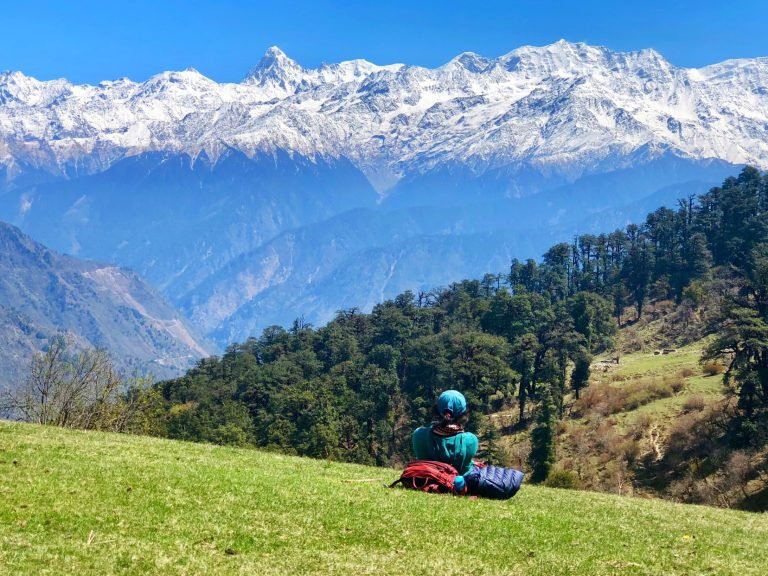Uttarakhand, the “Land of the Gods,” is a treasure trove of natural beauty, from the snow-capped Himalayas to sacred rivers winding through lush valleys. In 2025, eco-tourism in this northern Indian state is more than a trend—it’s a movement to preserve its pristine landscapes while offering travelers unforgettable experiences. I’ve trekked through its misty forests and stayed in quaint homestays, and the magic of Uttarakhand’s sustainable travel offerings is undeniable. This article dives into the heart of eco-tourism in Uttarakhand, exploring its initiatives, destinations, and how you can travel responsibly to protect this Himalayan paradise.
What is Eco-Tourism?
Eco-tourism is about traveling responsibly to natural areas, conserving the environment, and uplifting local communities. In Uttarakhand, it means immersing yourself in the region’s biodiversity and culture while minimizing your footprint. It’s a chance to connect with nature without harming it, ensuring future generations can enjoy the same beauty.
Why Uttarakhand is a Hub for Eco-Tourism
Uttarakhand’s diverse ecosystems, including the Himalayas, national parks, and sacred rivers, make it a prime eco-tourism destination. The state’s focus on sustainable practices, backed by government and community efforts, sets it apart. My visit to a women-run cooperative in Munsiyari showed how locals are preserving their heritage while welcoming travelers.
Top Eco-Tourism Destinations in Uttarakhand
Uttarakhand boasts a range of destinations that blend adventure, culture, and sustainability. Here are some must-visit spots for eco-conscious travelers in 2025.
Jim Corbett National Park: Wildlife and Conservation
India’s first national park, Jim Corbett, is a beacon of tiger conservation and eco-tourism. Sustainable safaris and community-led initiatives ensure minimal environmental impact. Staying at an eco-lodge near the park, I learned how local guides balance tourism with wildlife protection.
Sustainable Activities in Jim Corbett
Eco-friendly safaris, birdwatching, and nature walks let you explore the park’s biodiversity responsibly. Choose operators certified by Eco Tourism India for ethical experiences. These activities support conservation efforts and local livelihoods.
Valley of Flowers National Park: A Floral Paradise
This UNESCO World Heritage Site is famous for its vibrant alpine meadows and endemic flora. Guided treks ensure minimal disturbance to its delicate ecosystem. I’ll never forget the burst of colors during a trek here, a reminder of nature’s fragility and beauty.
Responsible Trekking Tips
Stick to designated trails, avoid picking flowers, and carry biodegradable waste bags. Local guides educate trekkers on preserving this floral haven, ensuring it remains pristine for future visitors.
Binsar Wildlife Sanctuary: Serenity and Sustainability
Binsar offers panoramic Himalayan views and rich biodiversity, with eco-lodges promoting solar energy and organic farming. My stay at a Binsar eco-camp, surrounded by birdsong, felt like a step back to simpler times. These camps support local communities while reducing environmental impact.
Birdwatching and Nature Walks
Binsar is a birdwatcher’s paradise, with over 200 species. Guided walks by locals teach you about native flora and fauna, fostering a deeper connection with nature.
Munsiyari: The Hidden Gem
Nestled in the Kumaon region, Munsiyari is known for its sustainable homestays and community-based tourism. The Maati Sangathan, a women-led cooperative, promotes organic farming and handicrafts. Staying with a local family here, I savored Garhwali cuisine and felt the warmth of their hospitality.
Community-Driven Experiences
Engage in organic farming workshops or buy handmade woolens to support locals. These activities empower communities and reduce reliance on urban migration.
Rishikesh: Spirituality Meets Sustainability
Known as the yoga capital, Rishikesh blends spiritual retreats with eco-conscious practices. Eco-lodges along the Ganges promote waste reduction and renewable energy. Joining a yoga session by the river, I felt a profound connection to both nature and culture.
Eco-Friendly Yoga Retreats
Choose retreats that use sustainable materials and support local artisans. Many offer workshops on eco-living, teaching travelers how to reduce their environmental impact.
Comparing Eco-Tourism Destinations
| Destination | Key Features | Best Eco Activities | Sustainability Focus |
|---|---|---|---|
| Jim Corbett National Park | Tiger conservation, diverse wildlife | Eco-safaris, birdwatching | Wildlife protection, community involvement |
| Valley of Flowers | Alpine meadows, UNESCO site | Guided treks, photography | Flora preservation, responsible trekking |
| Binsar Wildlife Sanctuary | Himalayan views, bird diversity | Birdwatching, nature walks | Eco-lodges, organic farming |
| Munsiyari | Remote, community-driven | Organic farming, cultural tours | Local empowerment, sustainable homestays |
| Rishikesh | Spiritual hub, Ganges river | Yoga retreats, river rafting | Waste reduction, renewable energy |
Pros and Cons of Eco-Tourism in Uttarakhand
Pros:
- Environmental Protection: Initiatives like plastic-free zones preserve ecosystems.
- Community Empowerment: Local homestays and cooperatives boost economies.
- Authentic Experiences: Cultural immersion offers meaningful travel memories.
Cons:
- Limited Infrastructure: Remote areas may lack amenities, challenging for some travelers.
- Enforcement Issues: Illegal activities like littering persist in some areas.
- Cost of Eco-Lodges: Sustainable accommodations can be pricier than standard hotels.
Eco-Tourism Initiatives in Uttarakhand
Uttarakhand’s government and local communities are pioneering eco-tourism, with the Forest Department’s Eco-Tourism Unit aiming for a Rs. 100 crore turnover by 2030. From plastic-free zones to AI-driven tourism platforms, these efforts make Uttarakhand a leader in sustainable travel.
Government-Led Efforts
The Uttarakhand Tourism Department has identified 32 eco-tourism sites, with 14 currently active, offering packages like wilderness safaris and cultural tours. Collaborations with IRCTC promote these initiatives nationally. These plans ensure tourism benefits both nature and locals.
Community-Based Tourism
Initiatives like the Maati Sangathan in Munsiyari empower women through organic farming and handicrafts. Staying at a homestay, I saw how these programs provide livelihoods while preserving traditions, creating a win-win for travelers and locals.
Plastic-Free Zones and Waste Management
Regions like Chopta and Kedarkantha have declared themselves plastic-free, with initiatives like Swachh Himalaya Abhiyan promoting trail cleanliness. Travelers are encouraged to carry reusable bottles and bags to support these efforts.
How to Be an Eco-Conscious Traveler
Eco-tourism thrives on mindful choices. Here’s how you can contribute to Uttarakhand’s sustainability in 2025:
- Choose Eco-Lodges: Opt for accommodations using solar power or rainwater harvesting, like Munsiyari Eco Resort or Go Green Huts in Chopta.
- Support Local Businesses: Buy handmade crafts in Almora or organic honey in Bhimtal to boost local economies.
- Follow Leave No Trace: Stick to trails, avoid littering, and use biodegradable products during treks.
- Use Sustainable Transport: Prefer UTC buses, electric rickshaws, or cycling in places like Rishikesh.
- Volunteer: Join clean-up drives in Mussoorie or reforestation projects in Uttarkashi.
Best Tools for Eco-Tourism
- Ecosia: A search engine that plants trees with your searches, indirectly supporting conservation.
- Eco Tourism India Website: Find certified eco-lodges and tour operators for responsible travel.
- Reusable Gear: Carry a stainless steel water bottle, cloth bag, and bamboo utensils to reduce waste.
A Personal Story: Trekking Kedarkantha
Last year, I embarked on the Kedarkantha trek, a sustainable trail in Uttarakhand’s Govind Pashu Vihar National Park. Our guide, a local from Sankri village, shared stories of how eco-tourism has transformed his community. We camped in designated areas, used biodegradable bags, and savored meals cooked by locals. The snow-draped peaks and starry nights were breathtaking, but knowing our trip supported the village made it even more special. It’s a reminder that every step we take as travelers can leave a positive mark.
People Also Ask (PAA)
What is eco-tourism in Uttarakhand?
Eco-tourism in Uttarakhand involves sustainable travel that preserves the environment and supports local communities, focusing on activities like trekking, wildlife safaris, and cultural immersion.
Which are the best eco-tourism destinations in Uttarakhand?
Top spots include Jim Corbett National Park, Valley of Flowers, Binsar Wildlife Sanctuary, Munsiyari, and Rishikesh, each offering unique sustainable experiences.
How can I travel sustainably in Uttarakhand?
Choose eco-lodges, use public transport, avoid single-use plastics, and support local businesses to minimize your environmental impact.
Are there eco-friendly tours in Uttarakhand?
Yes, operators like Snow Hikers and Indian Travel Online offer eco-conscious treks and safaris, certified for sustainability.
FAQ Section
Q: Why is eco-tourism important in Uttarakhand?
A: Eco-tourism protects Uttarakhand’s fragile ecosystems, supports local livelihoods, and ensures future generations can enjoy its natural beauty.
Q: What are the best eco-friendly activities in Uttarakhand?
A: Trekking in Valley of Flowers, birdwatching in Binsar, eco-safaris in Jim Corbett, and yoga retreats in Rishikesh are top choices.
Q: Where can I find eco-friendly accommodations?
A: Look for eco-lodges in Nainital, Munsiyari, or Chopta on platforms like Eco Tourism India or Tripadvisor.
Q: How does eco-tourism benefit local communities?
A: It provides jobs through homestays, guiding, and handicrafts, reducing urban migration and preserving cultural heritage.
Q: Can I volunteer for conservation in Uttarakhand?
A: Yes, join NGOs like Waste Warriors or programs in Jim Corbett and Uttarkashi for clean-up and reforestation efforts.
The Bigger Picture: Why Eco-Tourism Matters
Eco-tourism in Uttarakhand isn’t just about enjoying nature—it’s about preserving a delicate balance. The Himalayas are home to endangered species like the snow leopard and Himalayan musk deer, and unsustainable tourism threatens their habitats. By choosing eco-friendly practices, you help protect these ecosystems and support communities who depend on them. My time in Uttarakhand taught me that travel can be a force for good, leaving behind not footprints, but hope for a greener future.
A Call to Action
In 2025, Uttarakhand invites you to explore its beauty responsibly. Whether you’re trekking through flower-strewn valleys or meditating by the Ganges, every sustainable choice counts. Visit Uttarakhand Tourism for eco-tour packages, support local cooperatives, and share your journey to inspire others. Let’s ensure this Himalayan haven thrives for generations to come.





